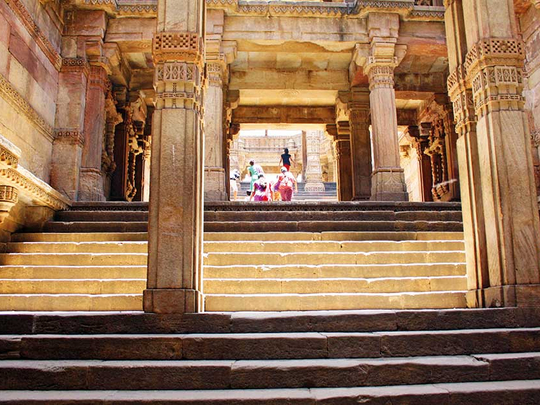
New Delhi: The 606-year-old walled city of Ahmedabad has become India’s first World Heritage City. The decision was announced on July 8 at the World Heritage Committee meeting of Unesco, held in Krakow, Poland. The city’s intricately carved wooden mansions dating back hundreds of years were also hailed at the meeting.
Ruchira Kamboj, India’s permanent representative to Unesco, said, “For over 600 years, Ahmedabad has stood for peace, as a landmark city where Mahatma Gandhi began India’s freedom struggle. It has stood for unity with its elegant carvings in its Hindu and Jain temples. It is also one of the finest examples of Indo-Islamic architecture and Hindu Muslim art. Beyond this, it epitomises the United Nations objective of sustainable development as it accelerates in its development.”
While the beginning to this landmark achievement began in 1984 when the first study for conserving heritage structures was commissioned, it was in 1996 that Ahmedabad started its heritage cell. Municipal Commissioner of Ahmedabad Mukesh Kumar says, “We formed a group of people dedicated to heritage management. With this tag, we have to ensure that the 2,600-odd heritage sites in the city are maintained perfectly.”
With the formulation of the heritage cell’s policy in 2007, the journey got a boost and the preparation for the city’s dossier commenced in 2011. Though there were struggles at every step, the major speed-breaker came in June, when Unesco decided to defer Ahmedabad’s nomination by a year. But the hurdles were crossed with the support of a strong and dedicated team under P K Ghosh, chairman of the Ahmedabad’s Heritage Conservation Committee. “The credit goes to a lot of people for preparing the dossier and making an effective representation,” he says.
The accolade has added brand value to the city and is set to boost its tourism. The city boasts of 28 Archeological Survey of India (ASI) protected structures within the walled city and more than 300 pols (old housing clusters), including the first pol house that was built, in 1738. In all, ASI has documented more than 2,500 houses. The Bhadra Fort, with its well-carved royal palaces, mosques, gates and open spaces, was built in 1411 by Ahmad Shah I.
Ahmedabad’s Jama Masjid, also referred to as Jumma Masjid, is one of the oldest mosques in the city and was built in 1424. In its Indo-Saracenic architecture, some of the central domes are carved like a lotus, like the domes of Jain temples.
Ahmedabad’s nomination was supported by 20 countries including Turkey, Lebanon, Poland, Croatia, Cuba, Portugal, Vietnam, Finland, Tanzania, South Korea, Tunisia and Finland.
It will now share the tag with cities including Kulangsu (China), Asmara (Africa) and Hebron (Palestine). Until now, only two cities in the Indian subcontinent — Bhaktapur in Nepal and Galle in Sri Lanka, feature in this list.
OTHER FACTS
• In India’s world heritage ‘tentative list’ since 2011, the government has been putting sites that go through crucial scrutiny.
• Ahmedabad was among 26 contenders in the ‘cultural’ section this year.
• The only other Indian nomination was Bhitarkanika National Park in Odisha in the ‘natural’ section.
• Delhi’s Lutyen’s Bungalow Zone (New Delhi) and Shahjahanabad (Old Delhi with Jama Masjid and Red Fort) were shortlisted in 2012, but the nomination was withdrawn in 2016.
• Mumbai was selected for “its blend of two centuries of architectural genres” around the 22-acre Oval Maidan — the 19th-century Neo-Gothic buildings and the art deco buildings of Marine Drive, but has not made any mark.












